The Data
As all the testing was performed with the exact same equipment (except the 140mm Noctua Industrial fans replace the 120mm GT fans), using the exact same methods as was used in the 360mm round-up so I have decided to keep this review uncluttered by keeping our testing methodology, test set-ups and equipment used in a single location. To see exactly how the tests were carried out, details of the test set ups and equipment used, please head over to the RRU Test Setup page.
Restriction Test
It’s generally agreed that radiators are one of, if not the least restrictive components in the water cooling loop. There are some exceptions however, so this must still be verified through testing:
The above photo is for referencing the restriction test bench The SR2 420 MP is not loaded so please disregard the data in the picture as it does not relate to the its test results.
Here is the raw data at the tested flow rates, displaying the measured Differential Pressure across the radiator as flow rate was increased.
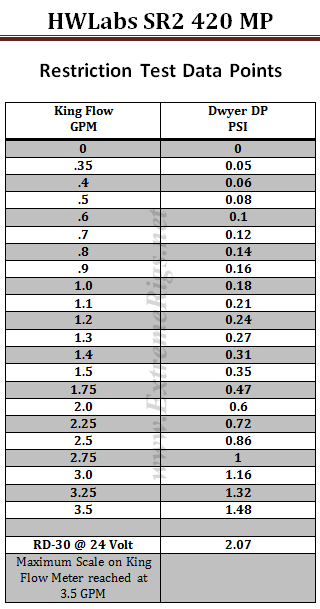 The table numbers indicate that this SR2 is a very low restriction radiator. However numbers in isolation can only tell half the story. By plotting against other components it more easily shows the whole story.
The table numbers indicate that this SR2 is a very low restriction radiator. However numbers in isolation can only tell half the story. By plotting against other components it more easily shows the whole story.
We have decided to use a HeatKiller 3.0 CPU block as the reference in this next plot for two reasons. Firstly there is no chance of the plot being cluttered by curves overlapping and secondly it gives a reference point against a fairly common loop component of average restriction.
As with all previous radiator restriction plots, I have limited the maximum flow rate displayed to 2.0 GPM as I suspect there are very few systems that operate above 2.0 GPM. For more information on how to read a restriction plot check out our guide.
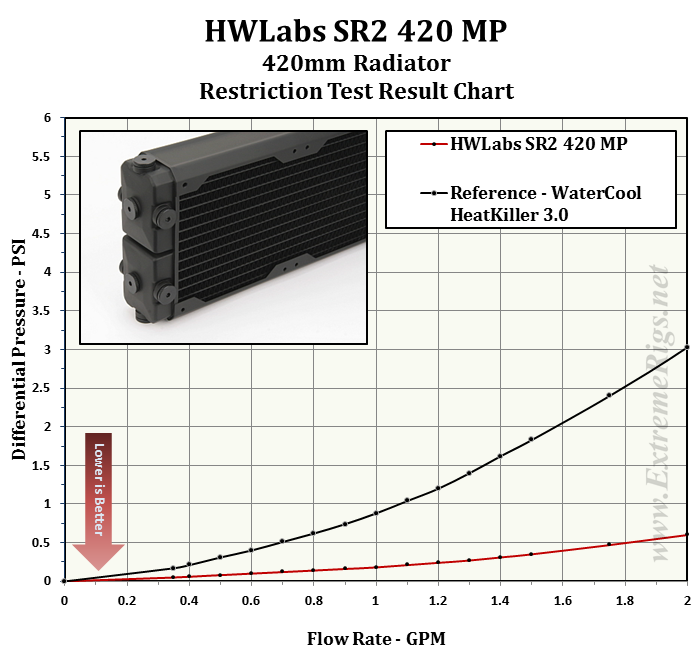 This plot indicates the SR2-MP as a very low restriction loop component when compared to a CPU block of average restriction, but what about other radiators?
This plot indicates the SR2-MP as a very low restriction loop component when compared to a CPU block of average restriction, but what about other radiators?
The next three plots show the restriction level at three different flow rates compared to the other 420mm radiator that has been tested so far. We consider the chosen GPM rates to represent systems which have low, medium and high flow rates.
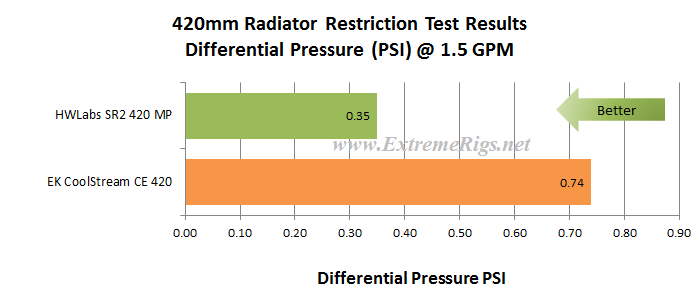 Clearly the SR2 MP has the lower restriction level of the 2 rads and is due to its larger tube size and it has an extra layer of tubes.. This is not to say the EK CE is overly restrictive, just that the SR2 is much less so.
Clearly the SR2 MP has the lower restriction level of the 2 rads and is due to its larger tube size and it has an extra layer of tubes.. This is not to say the EK CE is overly restrictive, just that the SR2 is much less so.
This next plot shows both 420 radiators results for the full range of the flow meter we use for testing the restriction level.
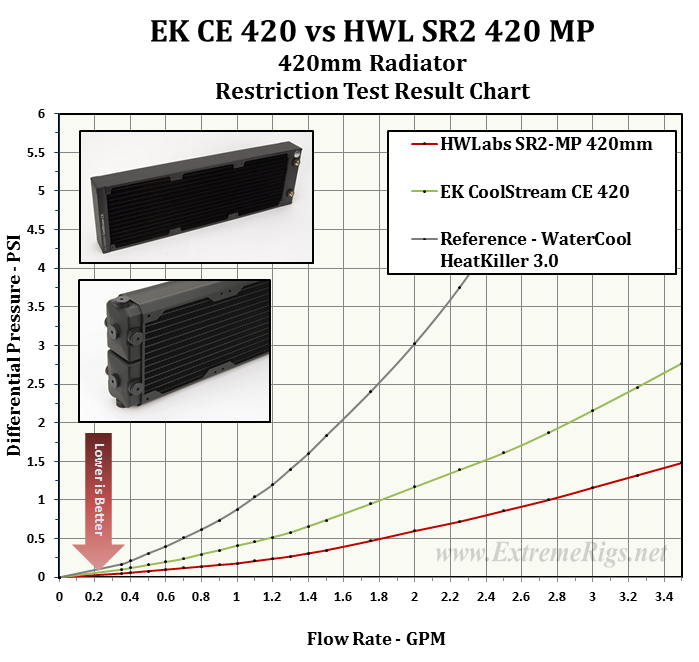 To give a bit more perspective, lets now take a look at where the SR2 420 MP fits in relation to all the radiators we have tested. For this plot only results for 1.0 GPM have been used for the comparison.
To give a bit more perspective, lets now take a look at where the SR2 420 MP fits in relation to all the radiators we have tested. For this plot only results for 1.0 GPM have been used for the comparison.
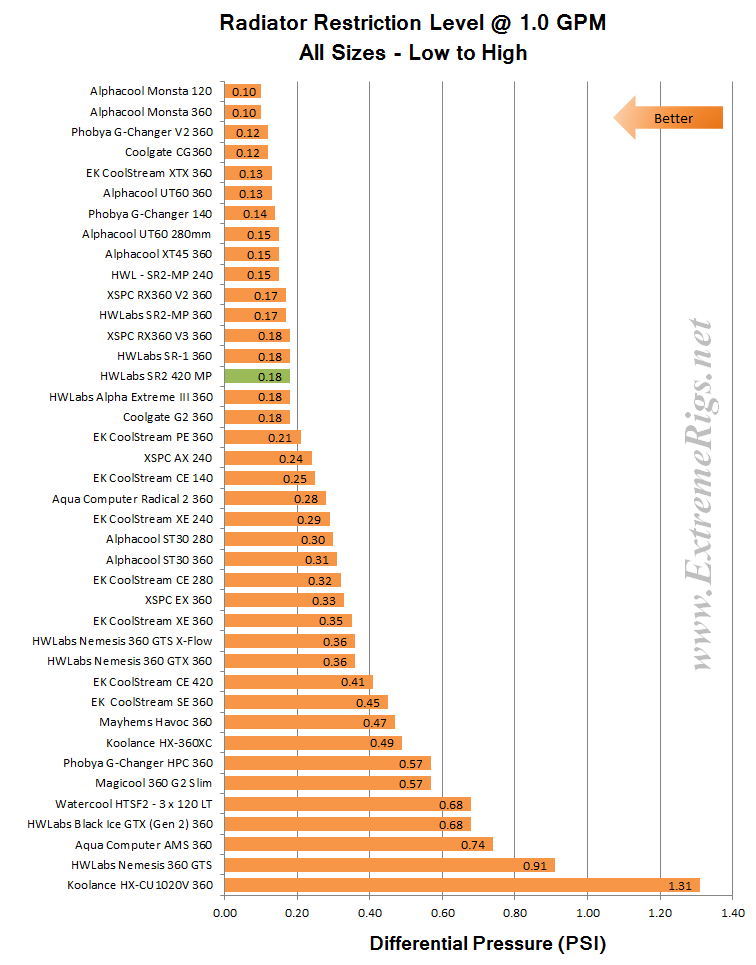
When put into context with all the radiators, the SR2 420 rates as a low restriction radiator.
Onwards to Thermal Performance!








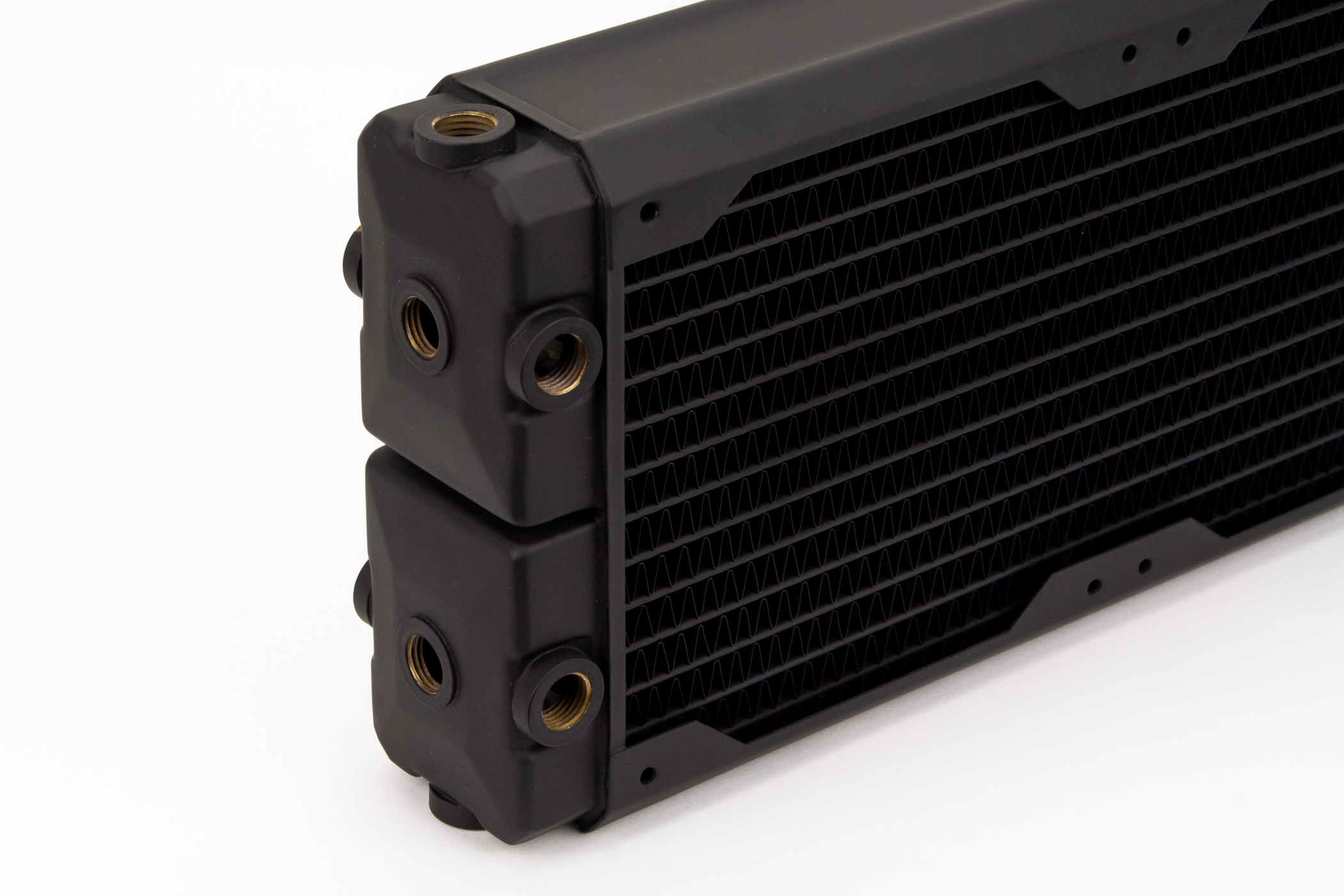
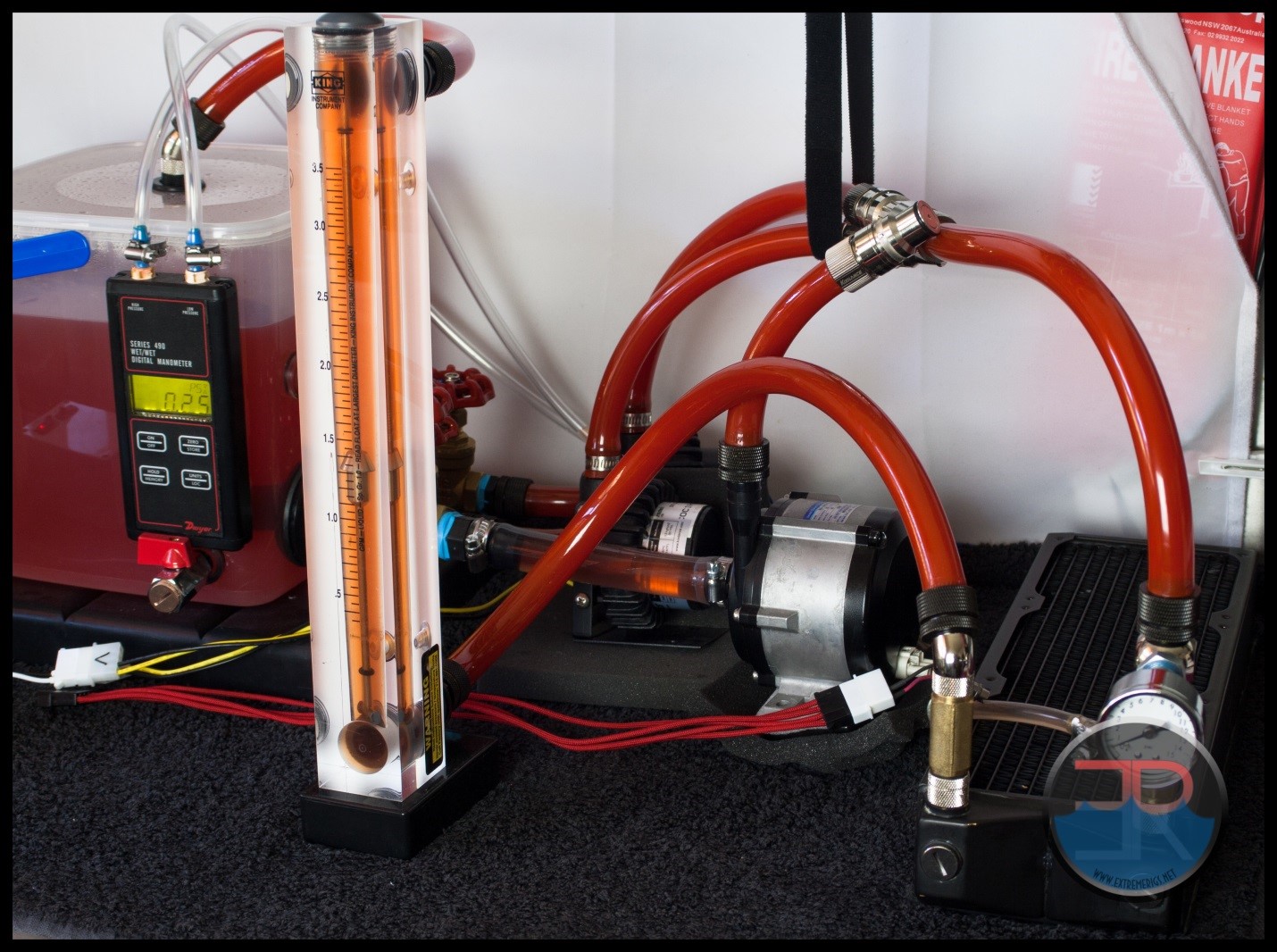
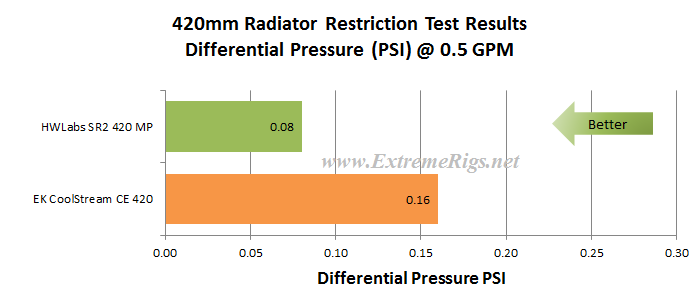
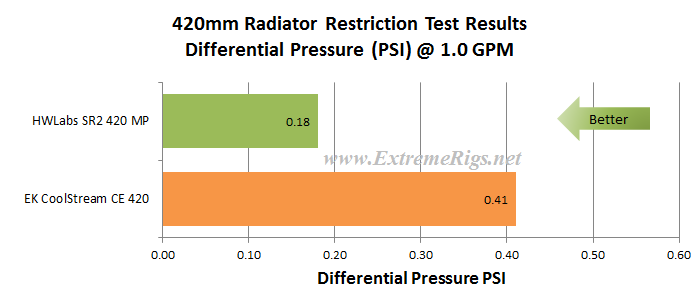



Thank you for the hard work! The section about testing methods was especially interesting. I have to wonder though… a silver award with a score of 4.5 out of 5? Is this a “goldish” silver or satin nickel silver?
We discussed the appropriate award to be issued and in the end it came down to 3 reasons why we did not issue gold.
The price point is very high compared to the radiator in the review.
We would like to see the ancillary port introduced.
And to a lesser degree the review sample had a few issues with the paint finish.
So while the SR2 MultiPorts are an excellent radiator choice, we feel there is still room for a little improvement.
Let’s call it a Goldish Silver
HWL doesn’t list the non-multiport version any longer on their website and that is unfortunate. For a lot of reasons, multiport isn’t ideal in all circumstances. If there are stop fittings installed, there will likely be clearance issues.
Comments are closed.